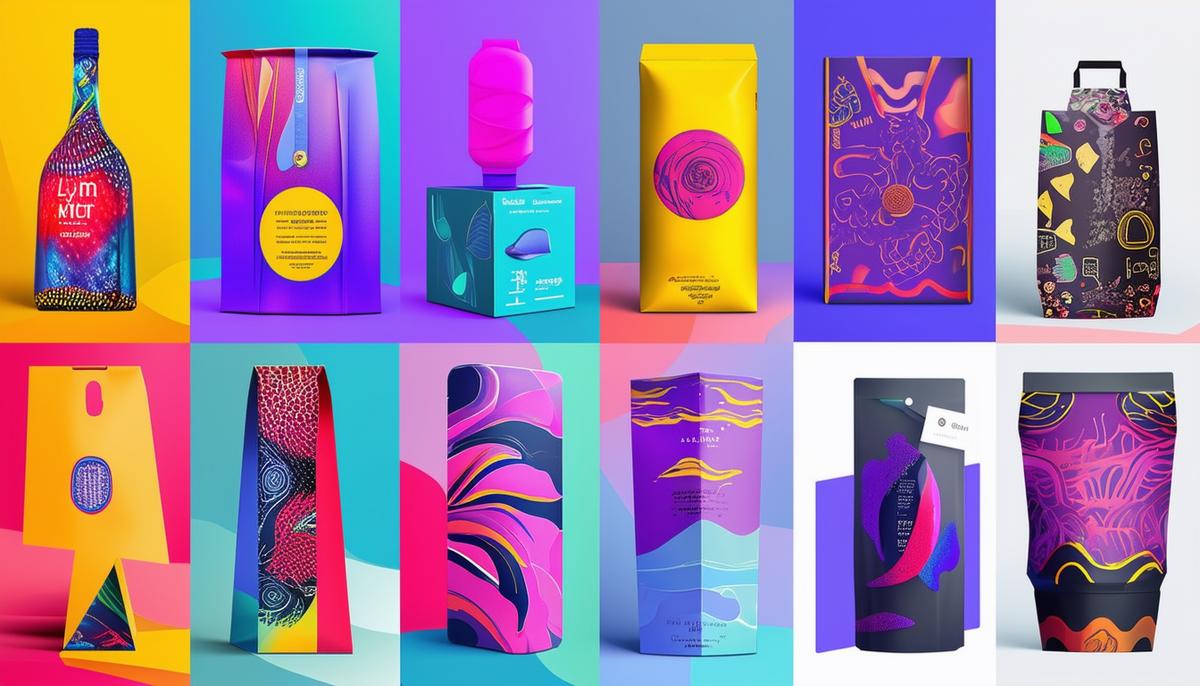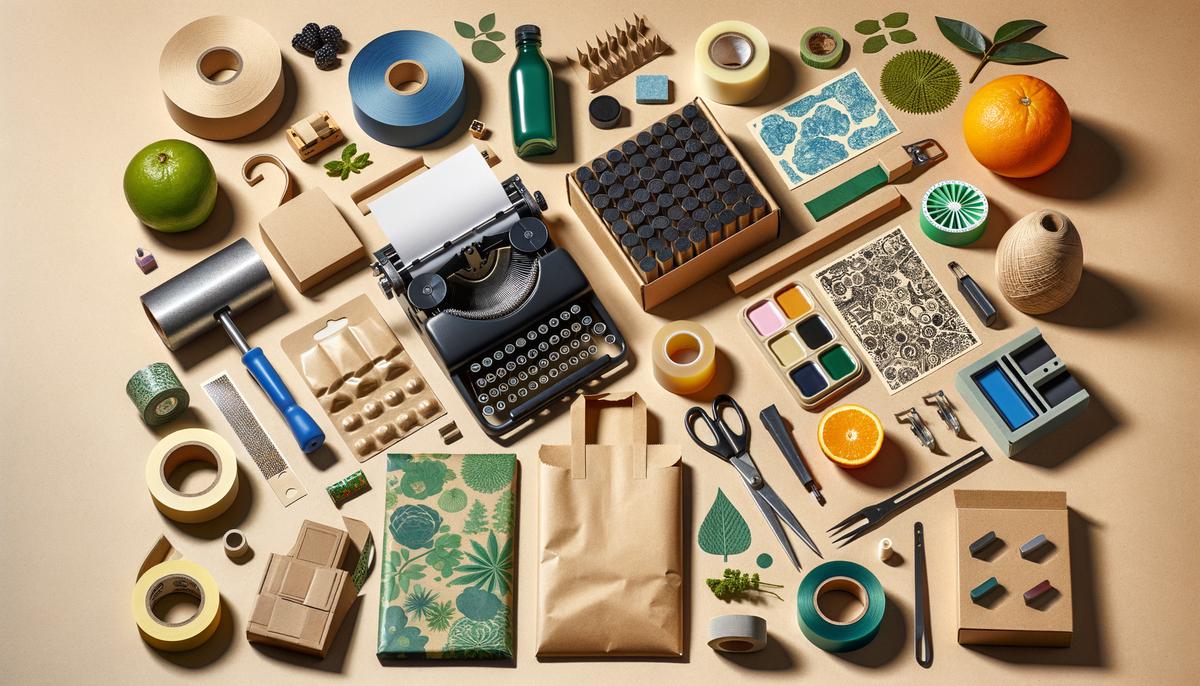Importance of Custom Packaging in Seasonal Campaigns
The way your packaging catches the eye can make or break a seasonal campaign. Think vibrant colors, unique shapes, and intricate designs. Swap out the everyday packaging for festive alternatives, and suddenly everyone's eager to share their latest purchase on social media. These subtle tweaks create an instant connection to the season, drawing in customers.
Exclusivity is essential. Limited edition packaging screams "special." When consumers spot a one-of-a-kind design, they feel like they've stumbled onto something rare. This drives purchases and loyalty – they're not just buying a product, but an experience.
Your brand identity shines through seasonal campaigns with custom designs reflecting holiday themes while maintaining a luxury touch.
An unforgettable unboxing experience is a game changer. Custom packaging can elevate a simple product into a memorable event. Imagine opening a gift wrapped in high-quality, festive packaging with a personalized note inside. The recipient feels special and is likely to share their experience on social media, extending your brand's reach.
Sustainability matters, especially during the holidays when packaging waste can skyrocket. Opt for eco-friendly materials and let customers know. This reduces environmental impact and aligns your brand with the values of conscientious consumers.
Designing packaging to resonate with your audience isn't just about aesthetics but understanding what makes them tick during the season. Use warm autumn tones, festive winter scenes, or vibrant spring colors to set the right mood. Incorporating elements that evoke the season's spirit makes your packaging relatable and memorable.
Custom packaging for seasonal campaigns captures attention, builds exclusivity, reinforces brand identity, enhances the unboxing experience, and supports sustainability. It's a small tweak that has a huge impact.

Designing Effective Seasonal Packaging
Choosing the right color scheme is crucial. Seasonal colors make an instant connection with your audience. Warm autumn tones like deep reds and oranges evoke the coziness of fall, while cool blues and sparkling whites mimic the chill and purity of winter. Vibrant pastels for spring signify rebirth and fresh starts, alluring customers with a sense of renewal.
Incorporate holiday-specific graphics into your packaging. Think snowflakes for winter, hearts for Valentine's Day, and pumpkins for Halloween. Graphics tied to the season create an emotional connection consumers crave, but they should align seamlessly with your brand's overall aesthetic. Eco-friendly brands can incorporate natural elements like autumn leaves or floral patterns to keep in line with their sustainable ethos.
Typography should complement the seasonal theme while remaining legible and on-brand. During the holidays, consider elegant scripts or bold, festive fonts. For Valentine's Day, whimsical cursive evokes romance, while Halloween might benefit from spooky, jagged fonts that add fun.
Material selection plays a vital role in product perception. Luxurious materials like foil-stamped paper or textured finishes make products feel exclusive and gift-ready. Eco-conscious brands might opt for recycled cardboard or biodegradable materials, appealing to environmentally-minded consumers while showcasing sustainable practices.
Printing techniques enhance packaging appeal. Spot UV printing highlights specific design areas with subtle shine. Embossing or debossing adds a tactile element, making packaging physically engaging.
- Starbucks' strategy of switching to festive cup designs not only boosts revenue but also keeps the brand relevant during the holiday rush.
- Apple's simple design tweaks like product boxes with a tiny red bow for Christmas add a sense of occasion without overwhelming their minimalist ethos.
Personalized packaging amplifies consumer engagement. Holiday-themed packing tape or custom stickers make packaging part of the festive experience. Receiving a package sealed with holiday tape and opening it to find custom stickers creates an interactive, memorable unboxing process.
Include personal notes in your packaging. A simple "Happy Holidays" card or personalized message makes recipients feel valued, fostering customer loyalty and encouraging repeat business.
Creating interactive packaging takes consumer engagement further. Incorporate QR codes leading to holiday playlists, video messages, or seasonal discounts. These digital touchpoints enrich the physical unboxing experience.
In summary, effective seasonal packaging results from strategic decisions – selecting the right colors, graphics, typography, materials, and printing techniques. Case studies show how minor tweaks lead to significant revenue spikes and brand loyalty. Get the basics right, add personal flair, and watch your seasonal campaigns flourish.

Sustainable and Practical Packaging Solutions
Choosing eco-friendly materials is the first step to sustainable packaging, such as recycled paper, cardboard, or biodegradable plastics. Vegetable-based inks and water-activated tapes further reduce environmental impact.
Practical considerations guide packaging type selection. Boxes offer sturdy, recyclable options with larger surface areas for creative design, ideal for products needing extra protection or multiple items. Padded mailers made from recycled materials are lightweight and cost-effective for smaller, less breakable items.
Balancing budget and sustainability goals is critical. Sustainable materials can carry higher upfront costs, straining budgets for small businesses. However, long-term benefits often outweigh initial expenditure. Invest in higher-quality sustainable materials where it makes the most impact while cutting costs in less critical areas.
Find cost-effective ways to create impactful packaging. Design minimalist packaging using fewer resources without compromising aesthetics. Incorporate multi-purpose packaging that can be reused or repurposed, adding value without significant additional costs.
Forecast accurately and plan long-term strategies to avoid surplus packaging post-season. Analyze previous sales data to estimate needed volume. Develop year-round recyclable or biodegradable packaging strategies to prevent one-time seasonal splurges. Explore long-term supplier contracts or volume discounts without sacrificing quality or sustainability.
Continuously evaluate processes to improve sustainable practices or cut costs without compromising quality. Engage with supply chains, ensure ethical practices, and seek customer feedback to adapt accordingly.
Sustainable packaging reflects a brand's values and commitment to the future. Whether opting for recyclable materials, minimalist designs, or multi-purpose packaging, the goal is balancing practicality with sustainability to create eco-friendly, impactful solutions.
Embracing these practices reduces environmental footprint while winning loyalty from eco-conscious customers. Balancing budget constraints with sustainability demands thoughtful strategies and smart planning – essentials for any modern brand.

Maximizing Impact and Measuring Success
To maximize custom packaging's impact, align it with special offers, discounts, or holiday-themed campaigns to create a cohesive brand story. This consistency strengthens brand identity and makes campaigns more memorable.
Create shareable unboxing moments to increase brand visibility exponentially. Focus on visually appealing and interactive elements like embossed logos, vibrant inserts, or personalized messages. Include hashtags related to your campaign or run contests where customers share their unboxing experiences for engagement and amplified reach.
Set clear key performance indicators (KPIs) like increased sales, social media shares featuring your packaging, or direct customer feedback. Gather feedback through post-purchase surveys, reviews, or social media polls to understand what resonated and needs improvement.
Analyze data like conversion rates from promotional efforts, average order value, and customer retention rates. These insights reveal how well packaging aligns with consumer preferences and campaign goals.
Leverage platforms like Instagram, YouTube, and TikTok – hotspots for unboxing videos and user-generated content. Encourage customers to share experiences with specific, campaign-related hashtags to create a prominent online footprint.
Run contests and giveaways to generate buzz and a sense of community. The more interactive and rewarding the campaign, the more likely customers will participate and spread the word.
Use data gathered to refine strategies for future campaigns. Continuous improvement ensures each seasonal campaign builds on the previous one's success, maintaining brand relevance and customer excitement.
Strategic coordination with overall campaign efforts, creating shareable moments, and diligent measurement of success maximize custom packaging's impact. Leveraging social media, gathering and analyzing data, and fostering direct customer engagement are crucial in refining and amplifying your brand's seasonal impact.
Custom packaging for seasonal campaigns builds exclusivity, strengthens brand identity, and creates memorable unboxing experiences. With thoughtful integration of these elements, your brand leaves a lasting impression and drives customer loyalty.
- Rahiya, Samantha. "The Impact of Packaging Design on Consumer Purchasing Behavior." Journal of Marketing and Consumer Research 54 (2019): 37-51.
- Underwood, Robert L., and Noreen M. Klein. "Packaging as brand communication: effects of product pictures on consumer responses to the package and brand." Journal of Marketing Theory and Practice 10.4 (2002): 58-68.
- Rundh, Bo. "Linking packaging to marketing: how packaging performs in the marketing communications system." British Food Journal 118.10 (2016): 2491-2511.
Leave a Reply